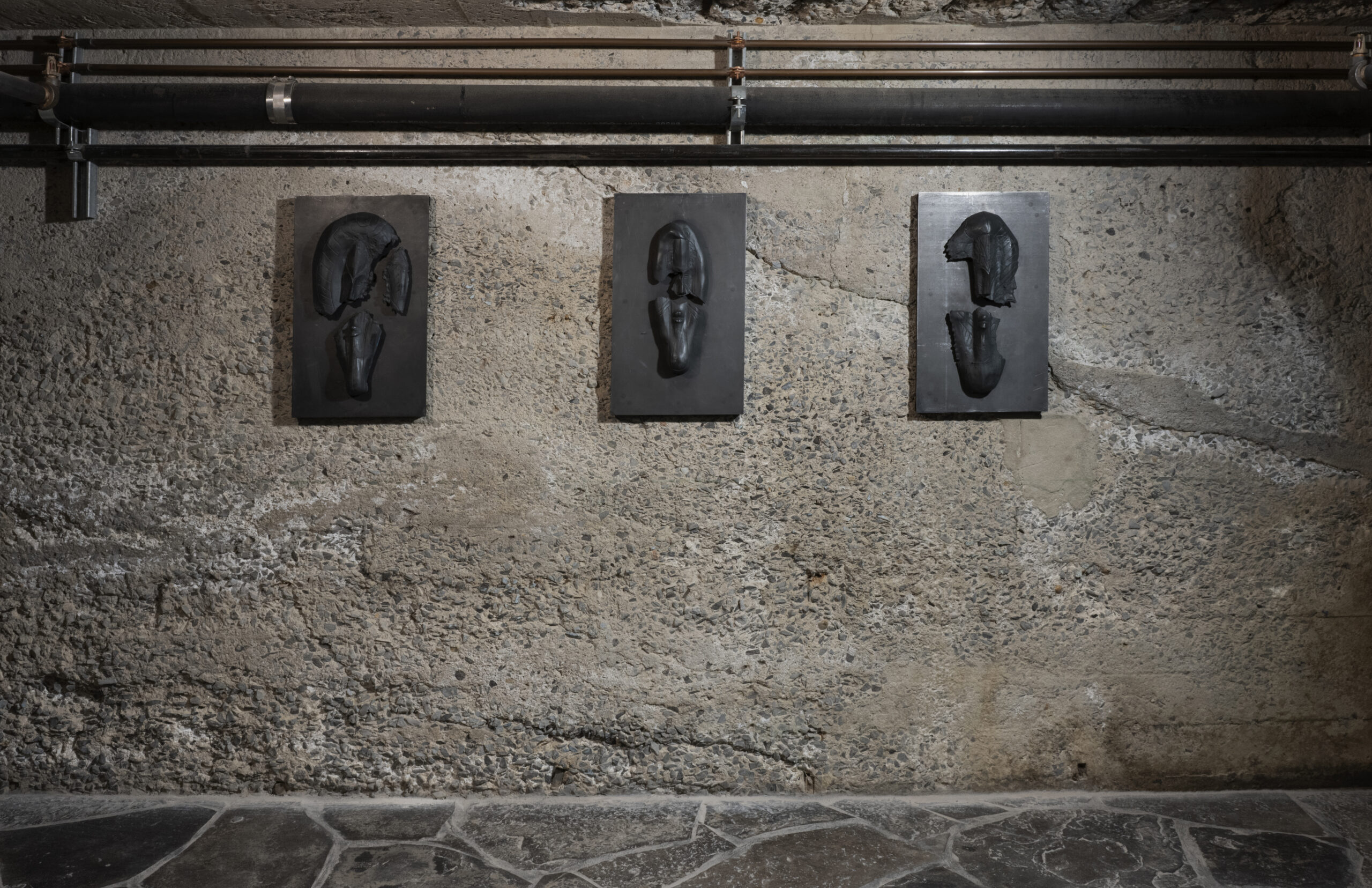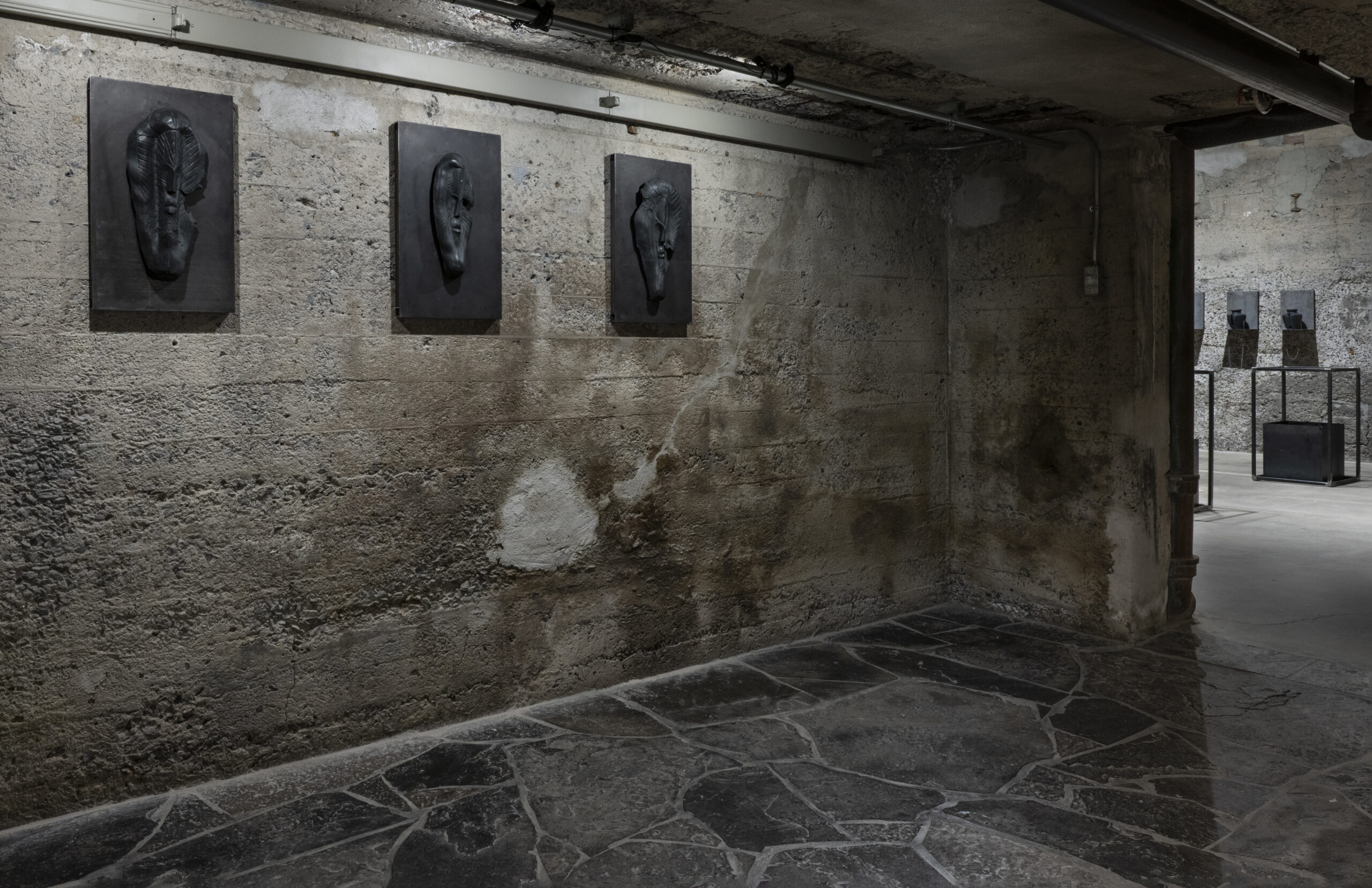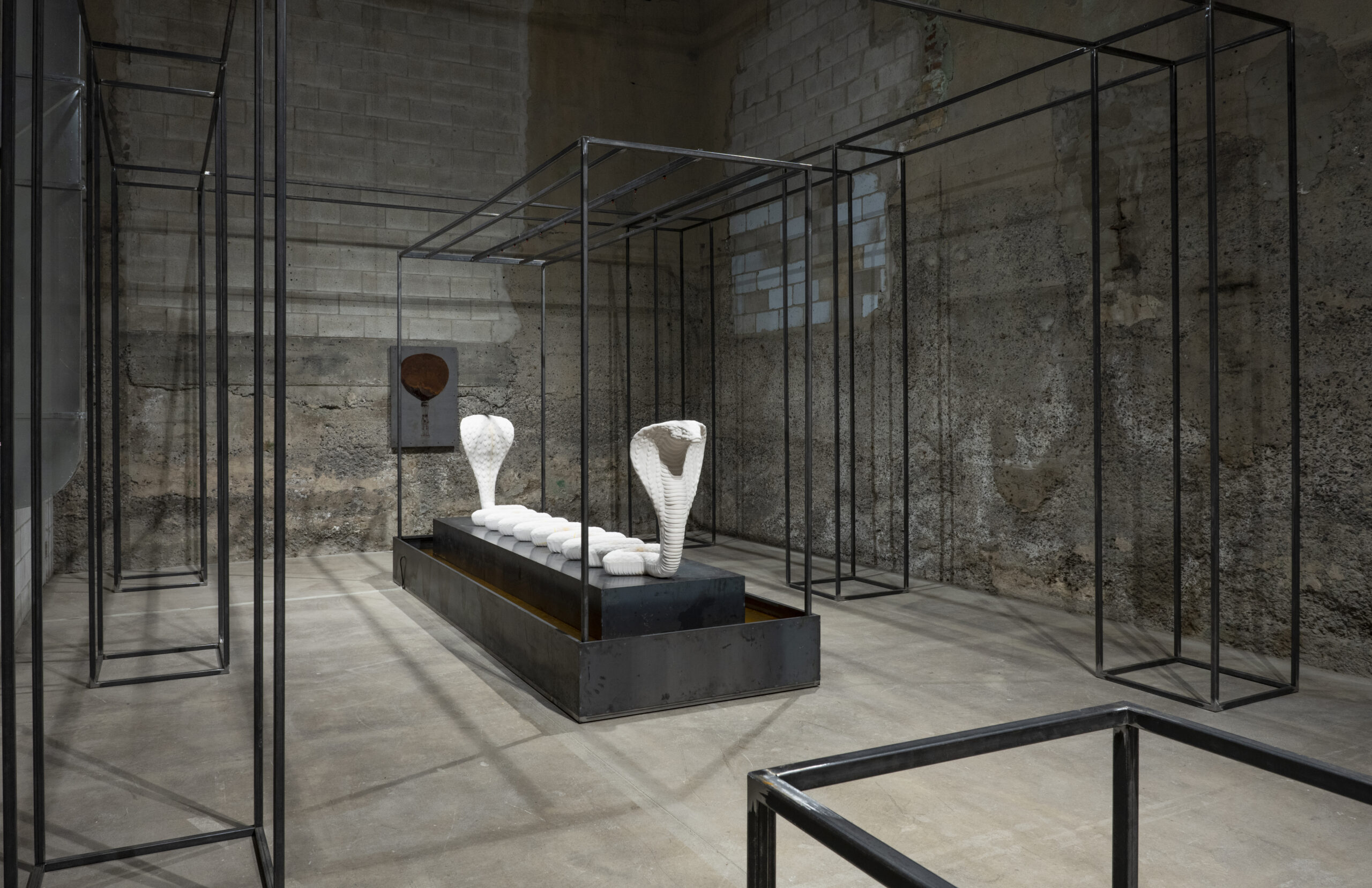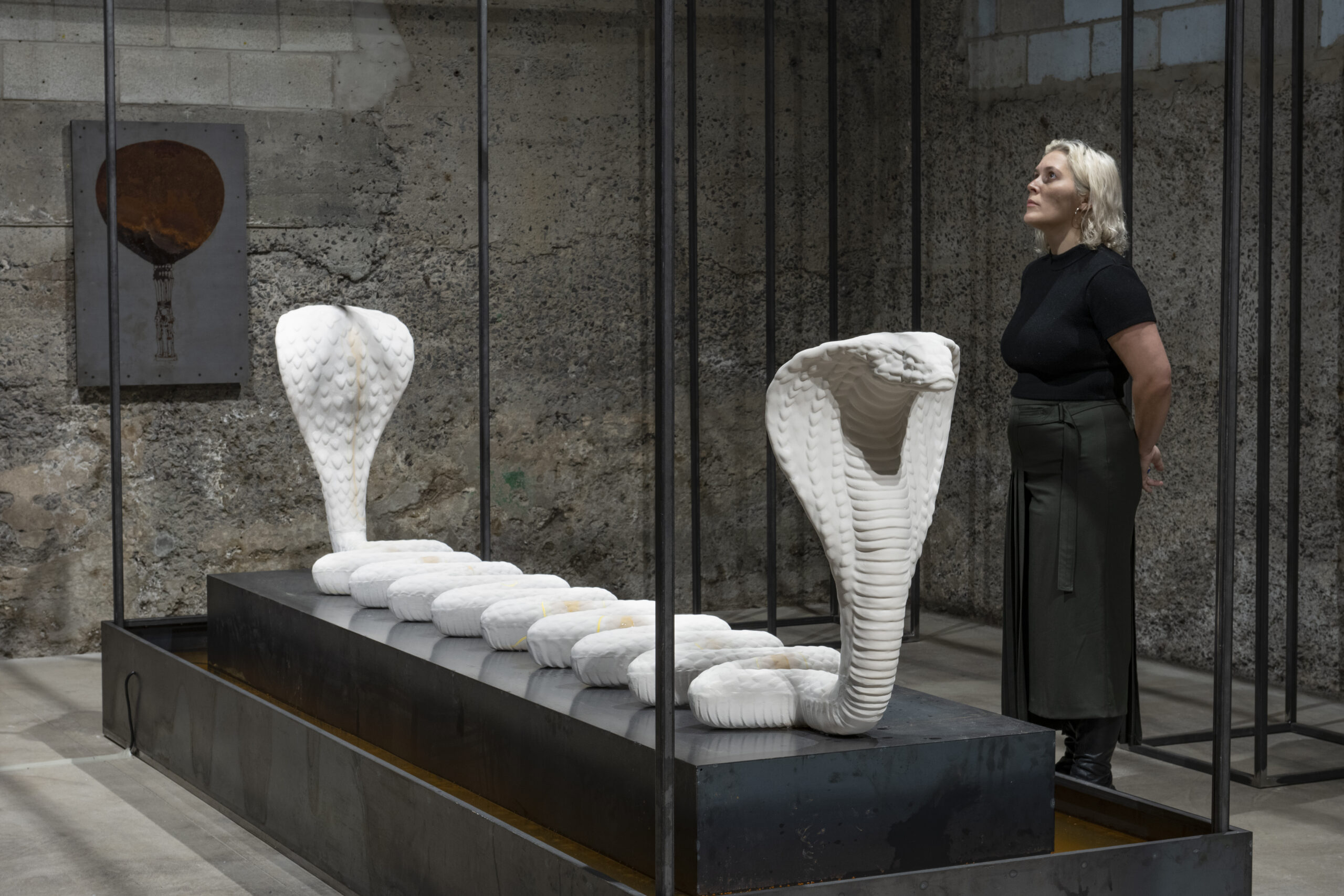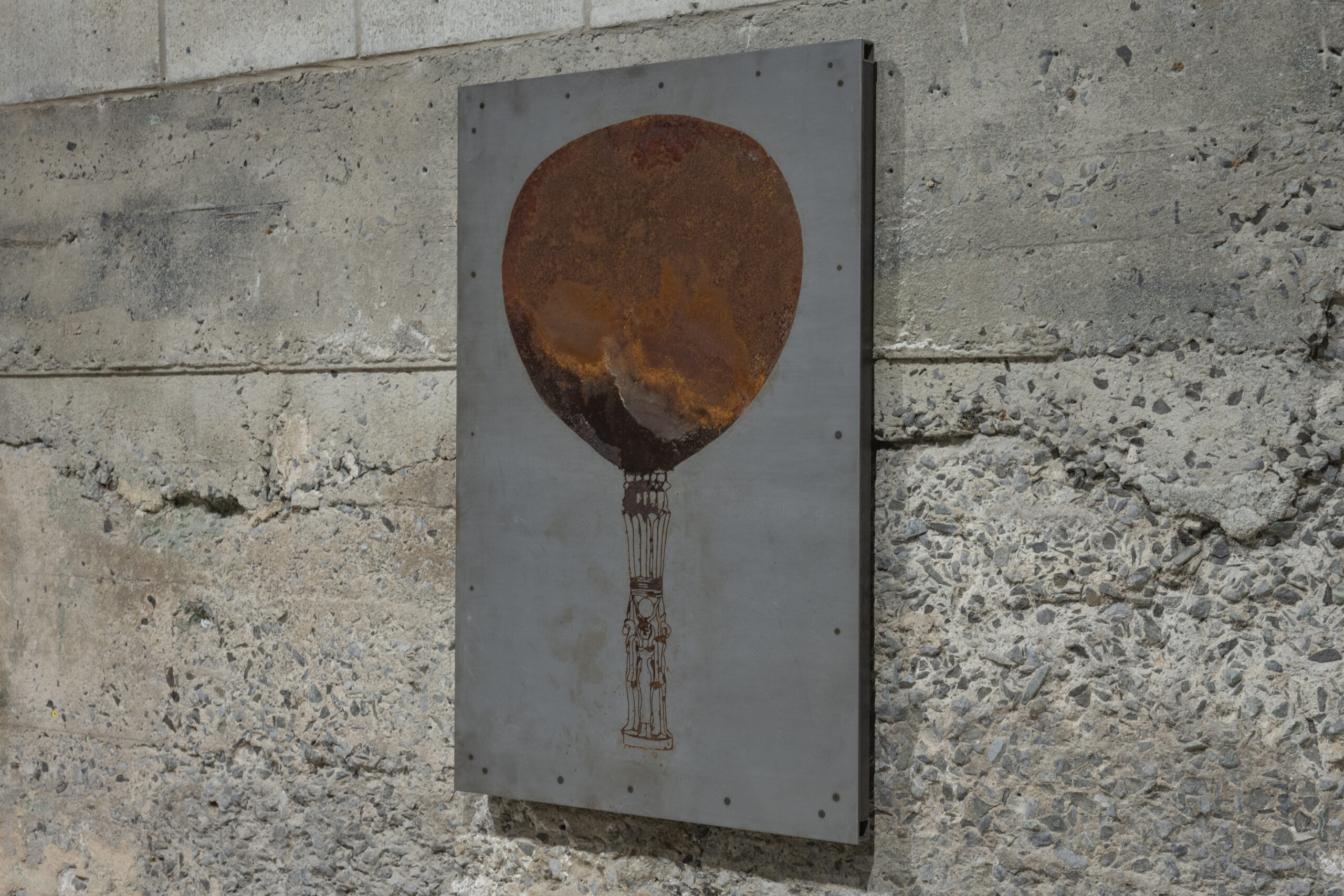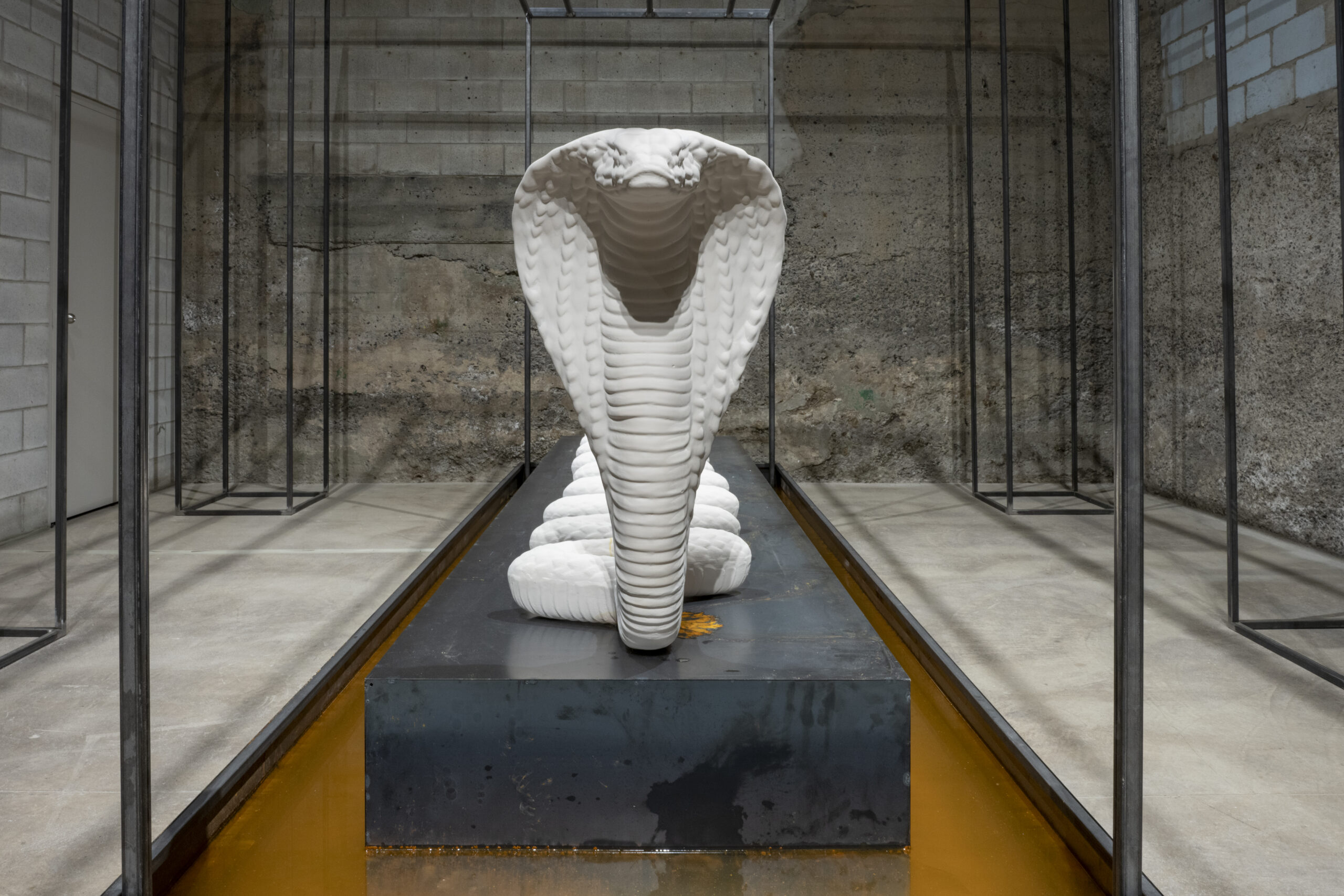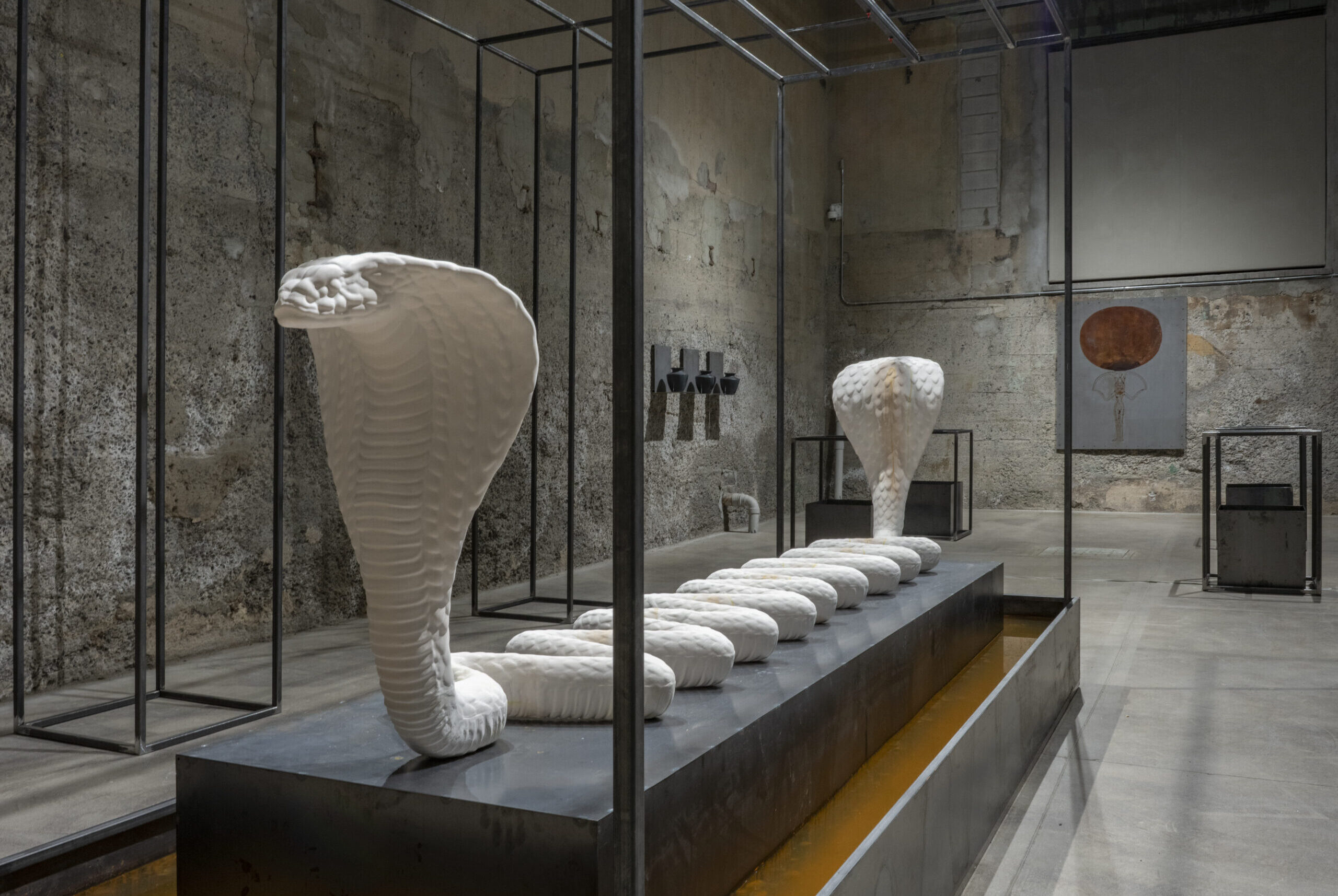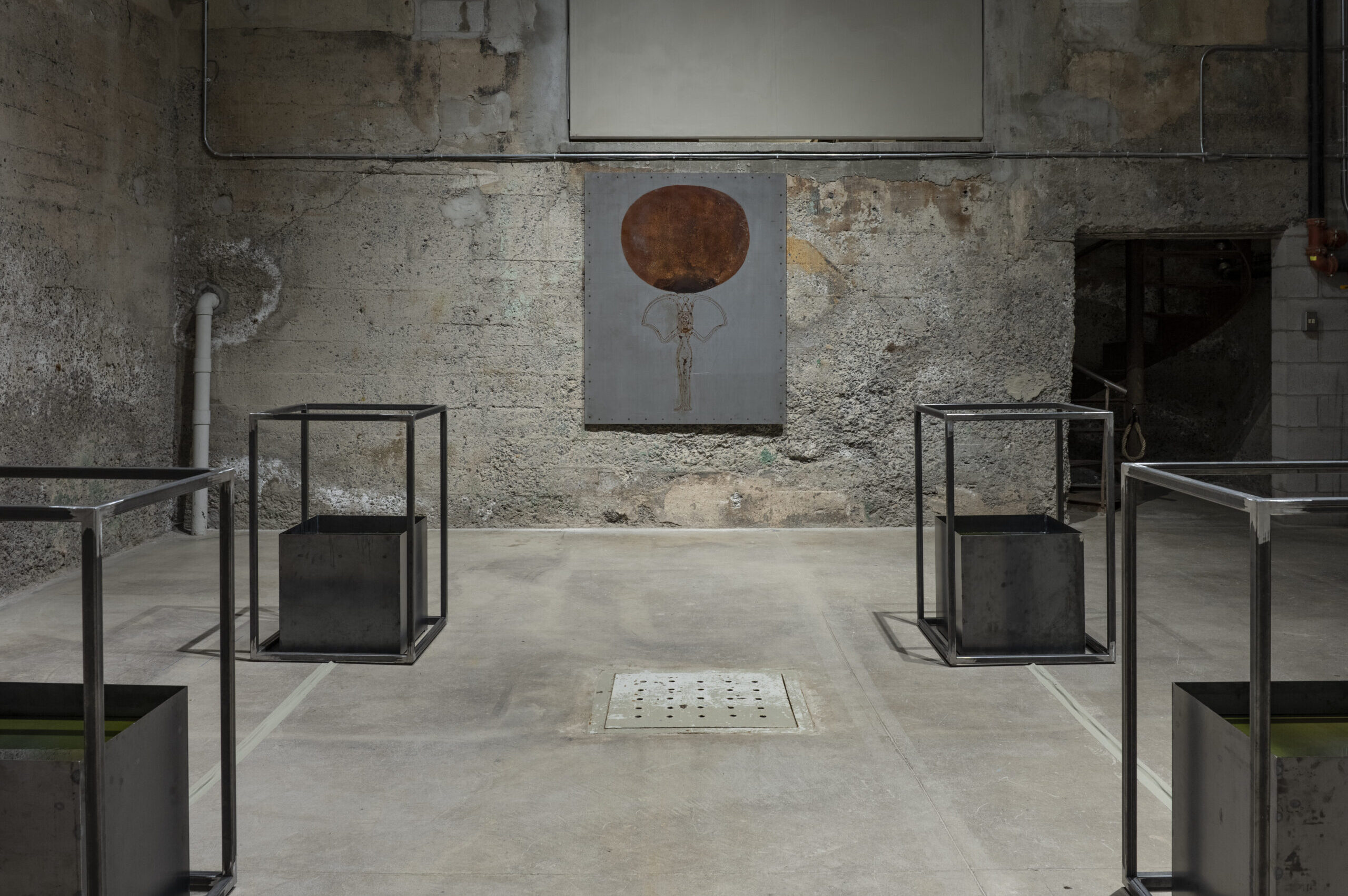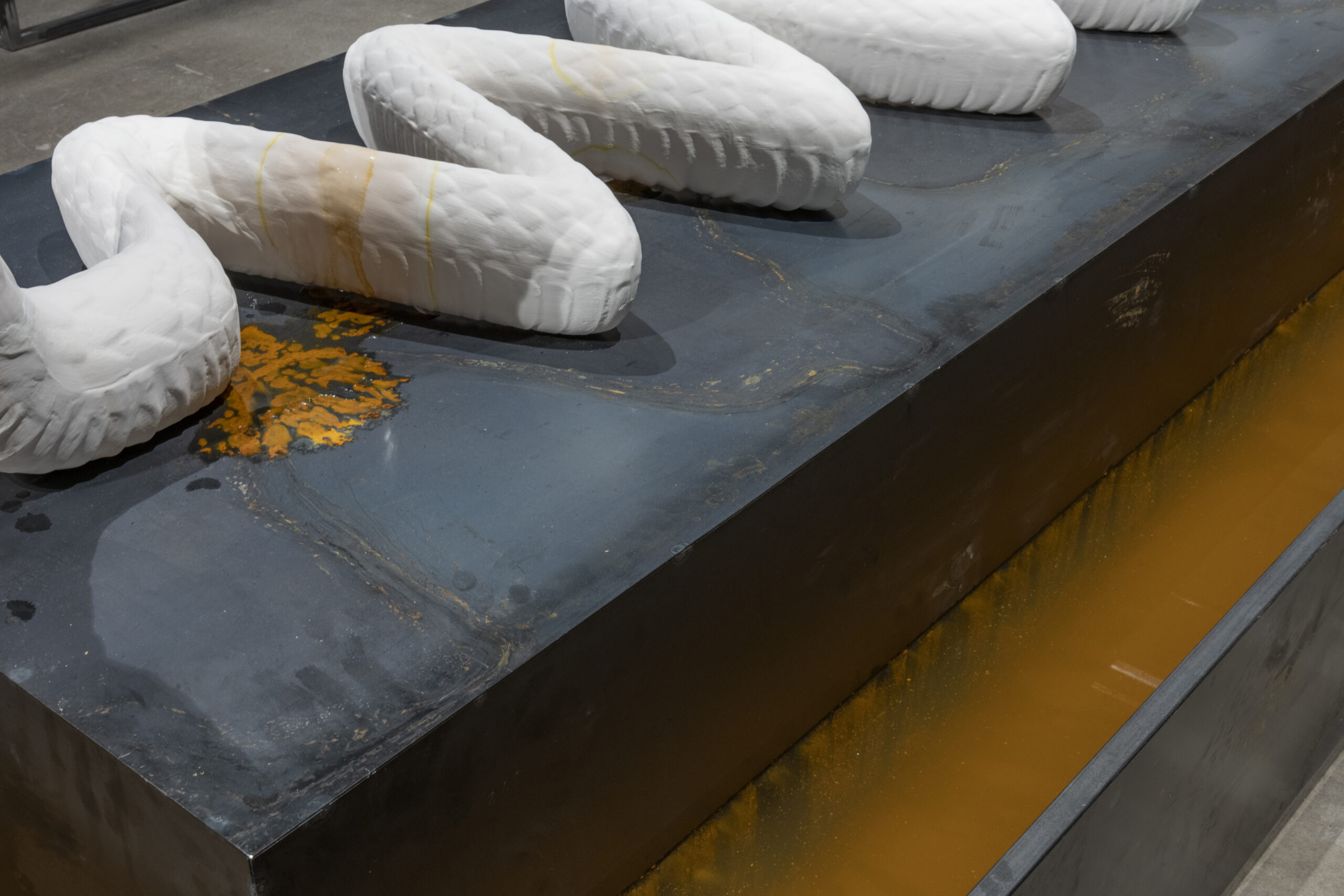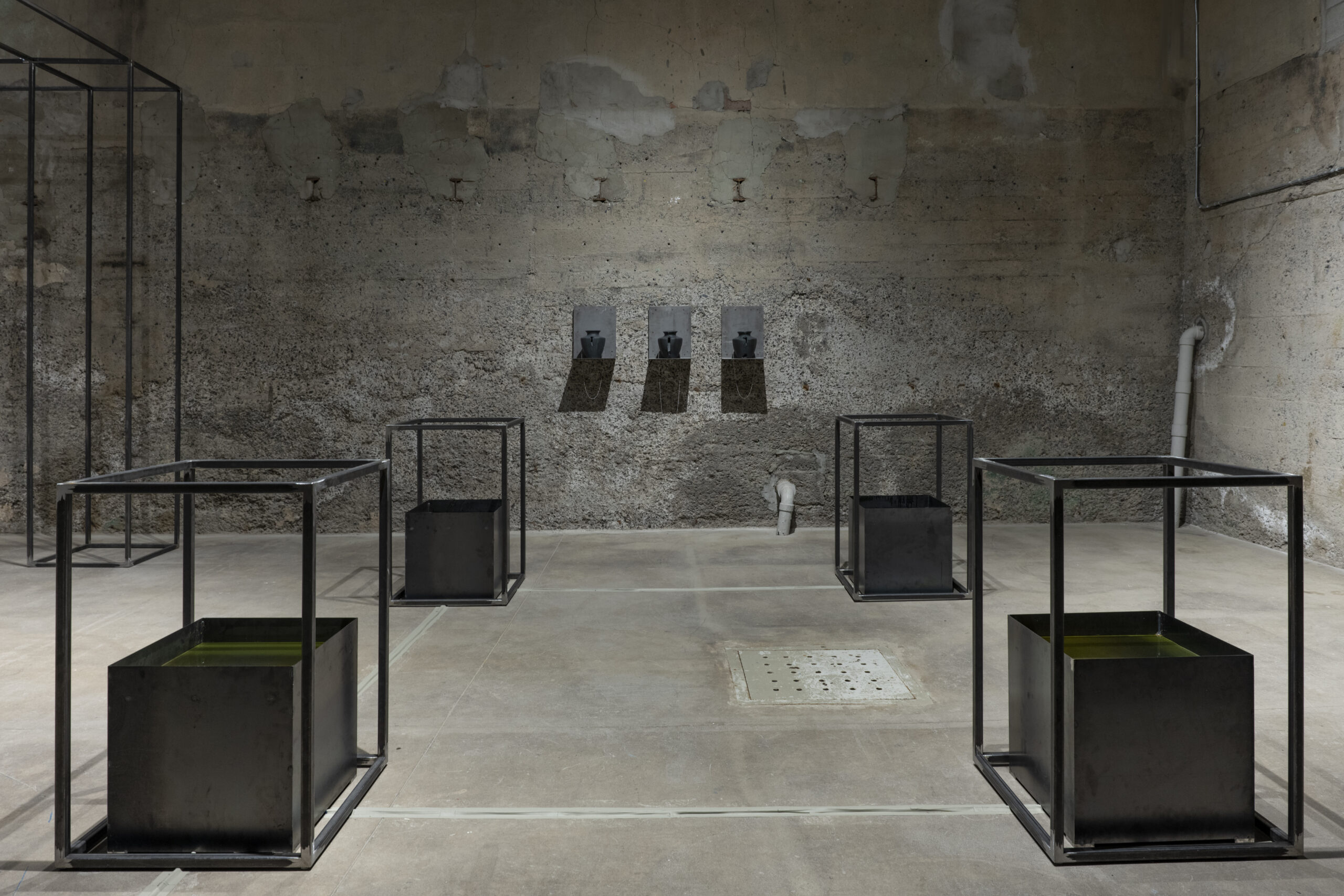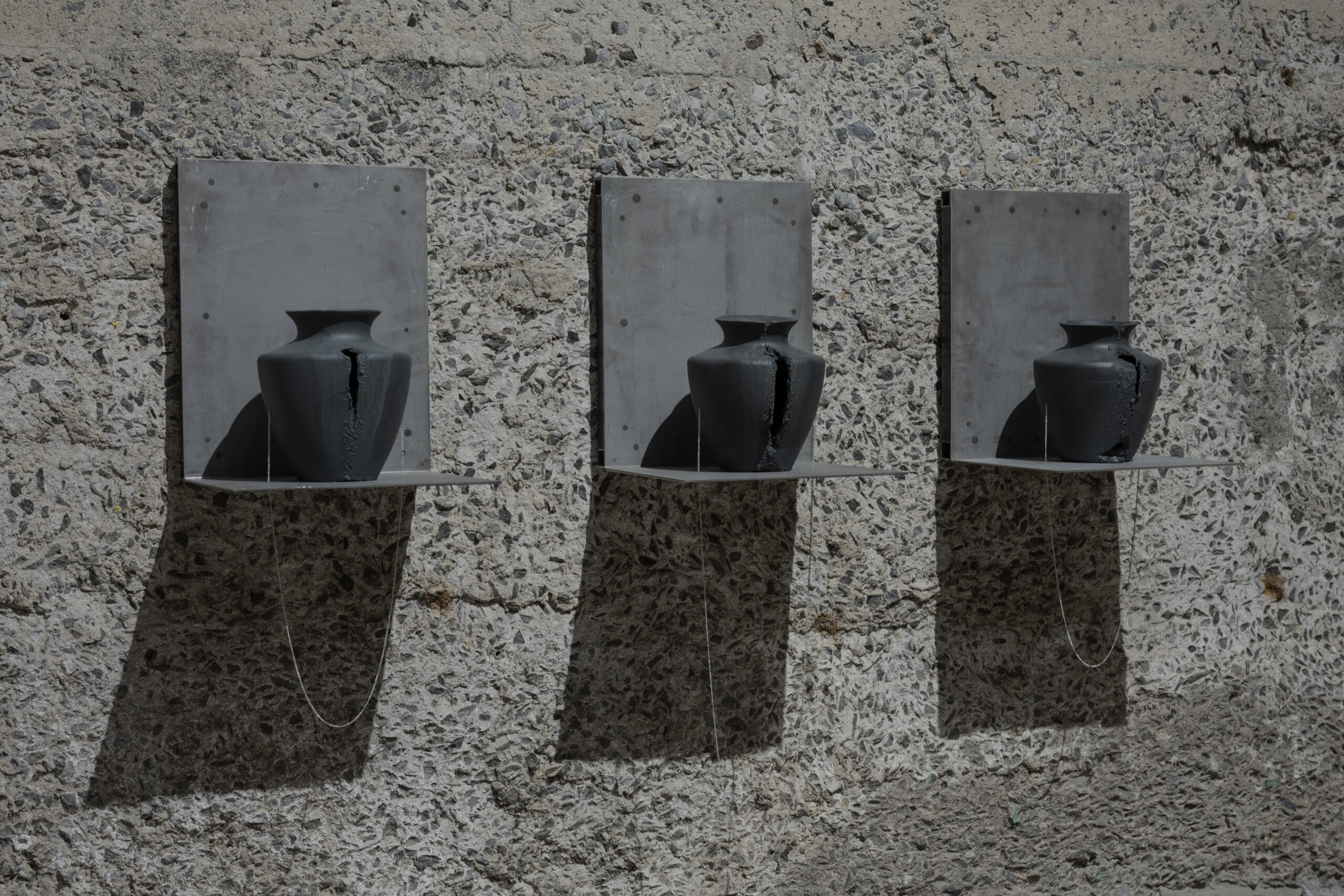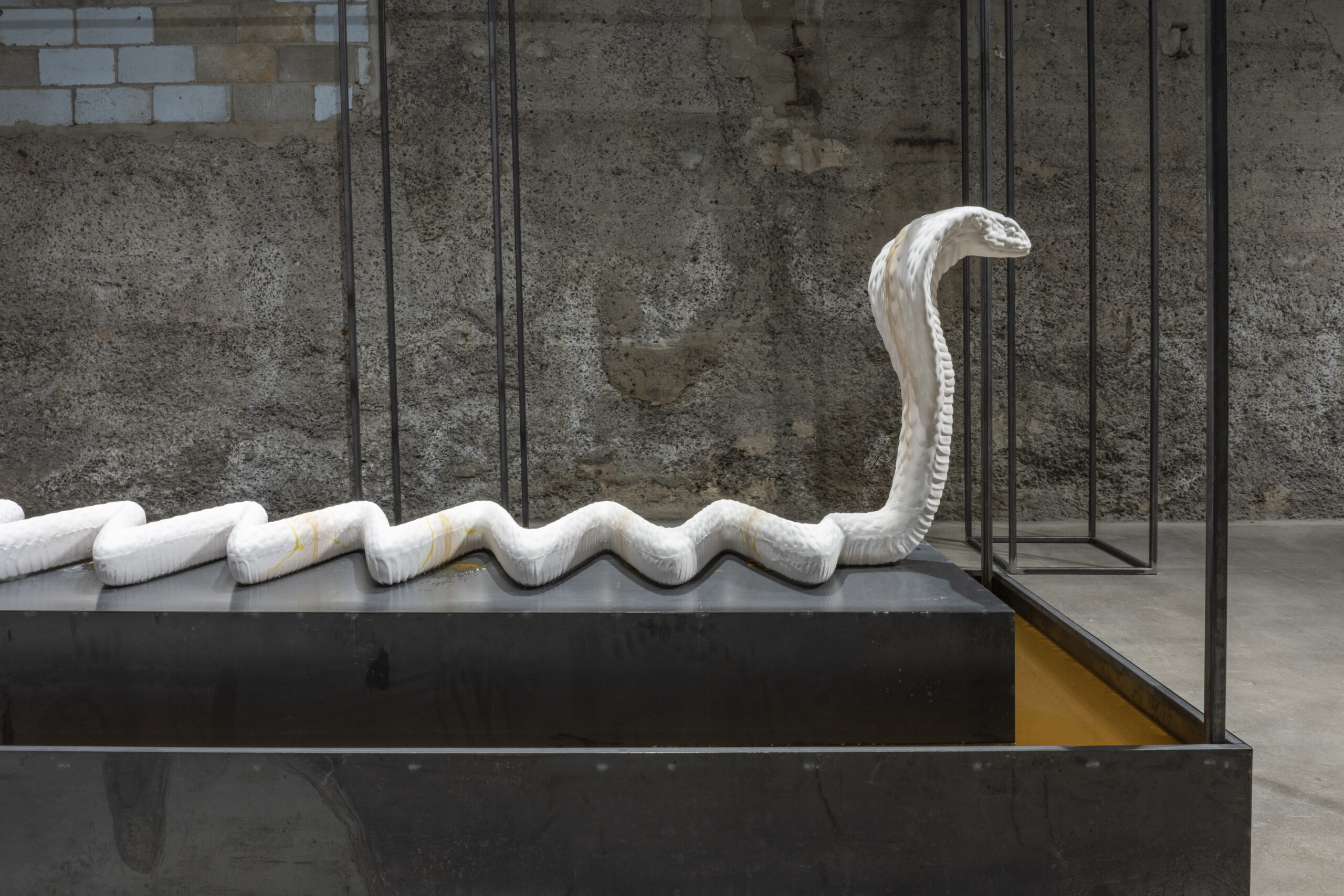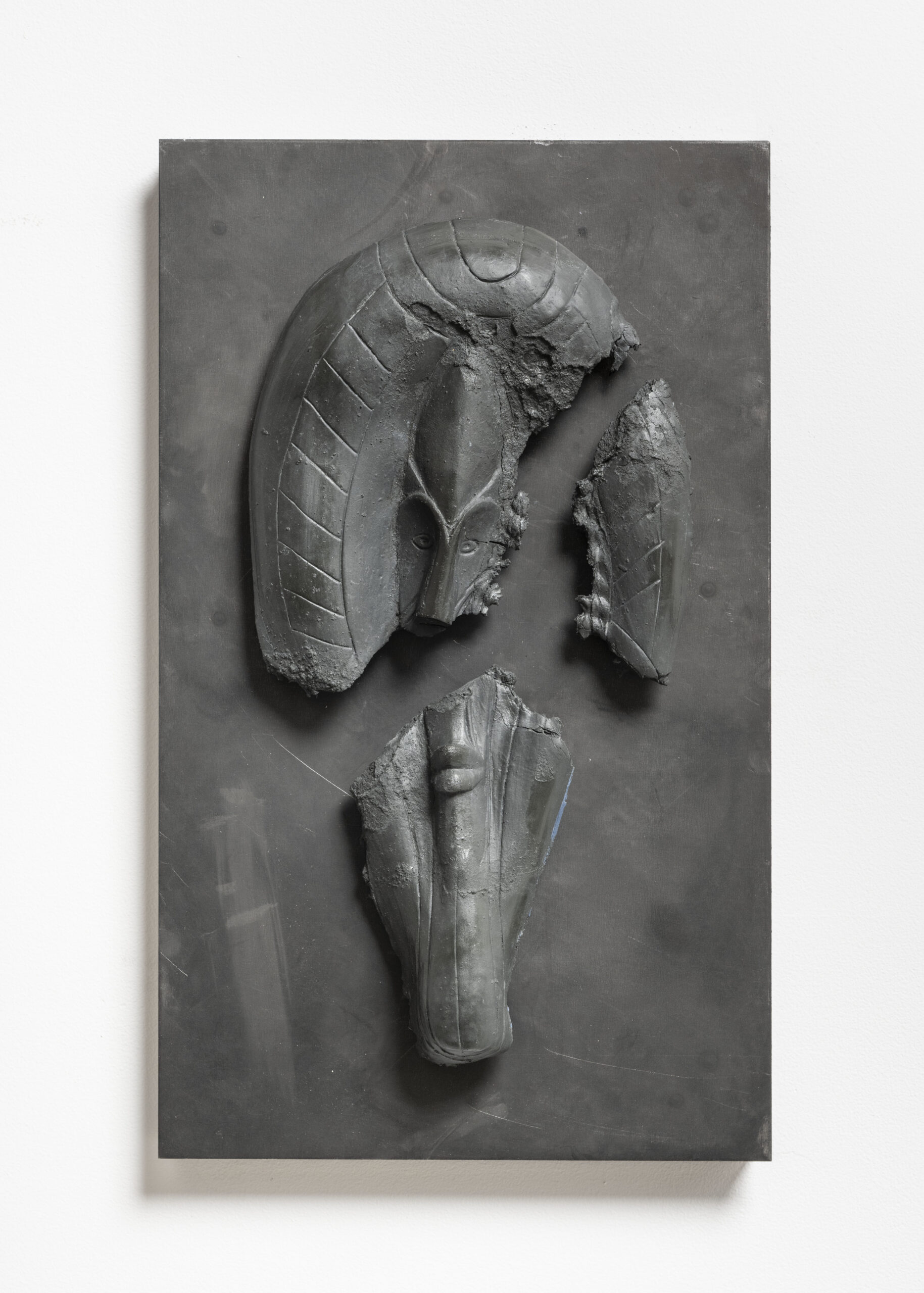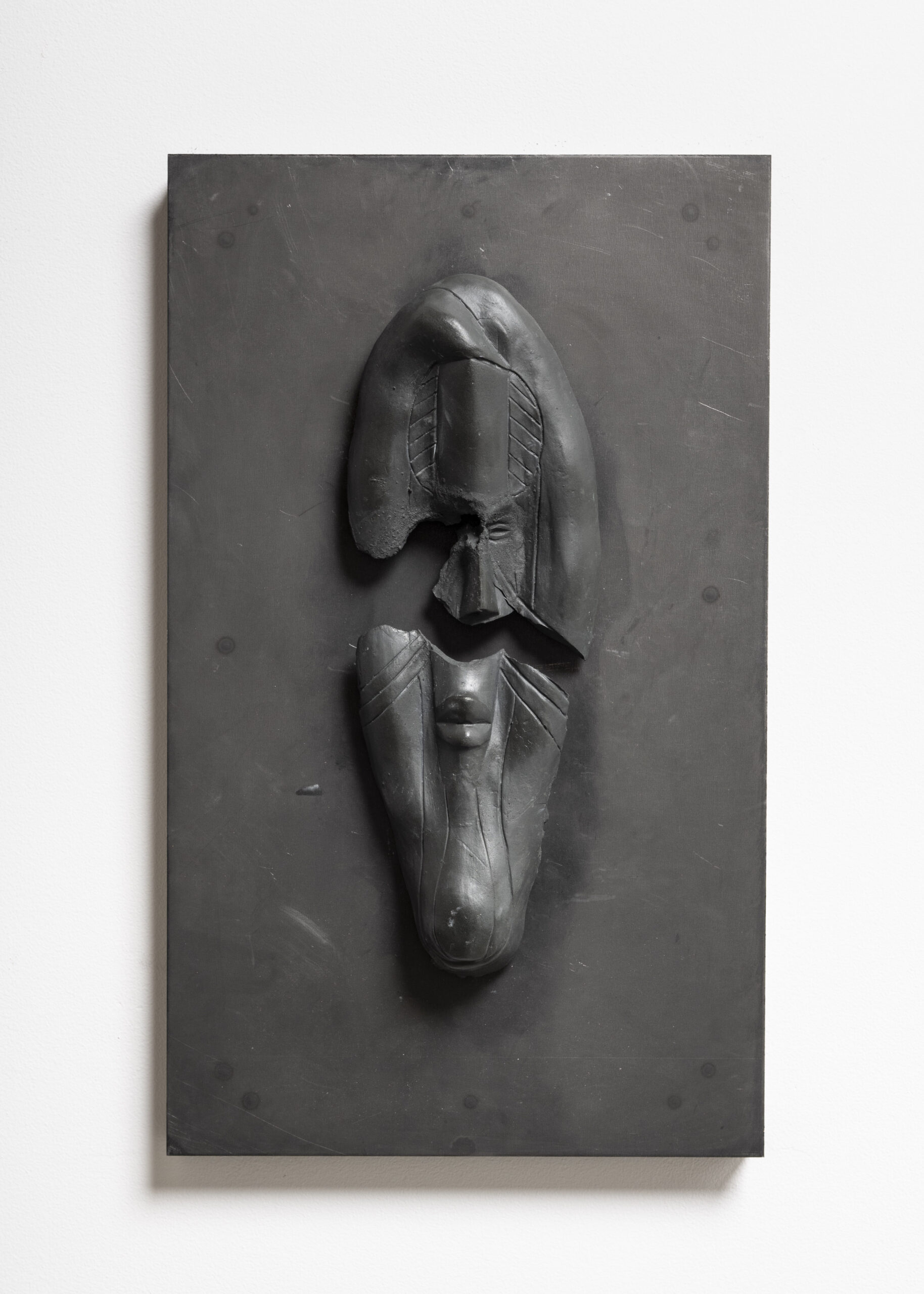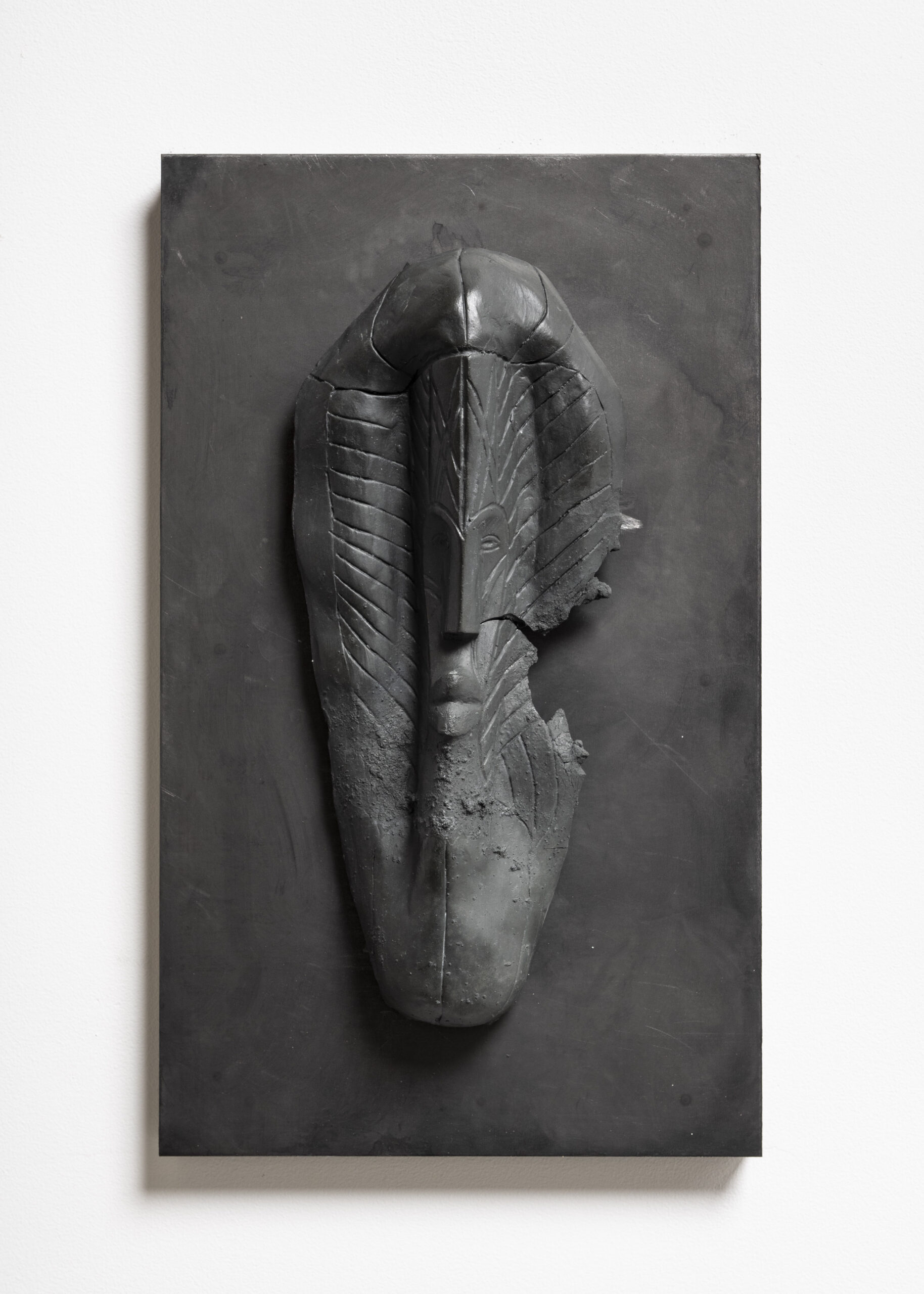that which trembles wavers
March 9th – April 22nd 2023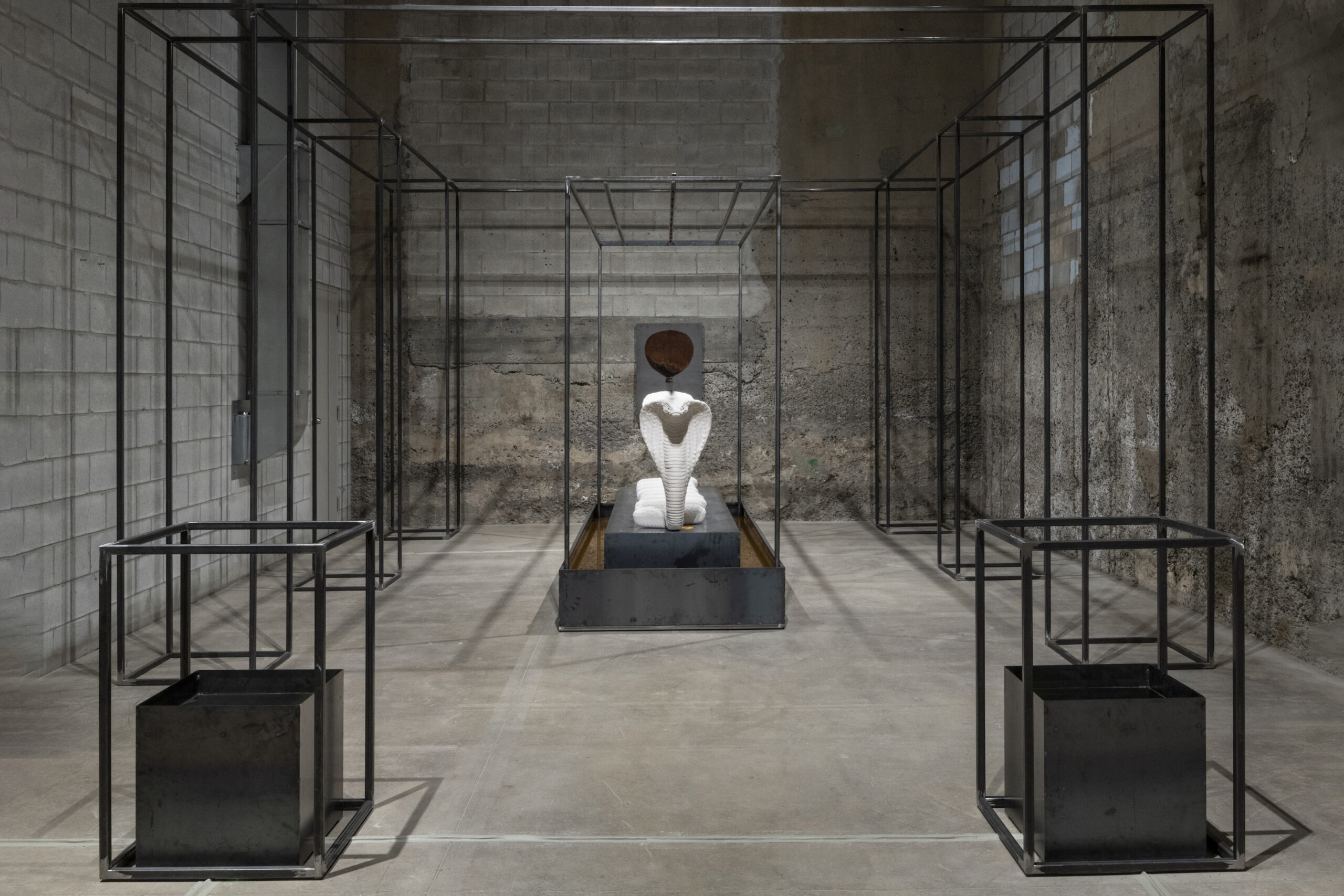
March 9 to April 22, 2023
Opening: March 9, 5 to 8 p.m.
Bradley Ertaskiran is pleased to present that which trembles wavers, a solo exhibition by Azza El Siddique. Conceived specifically for the Bunker, El Siddique’s immersive sensorial environment features multi-tiered steel architecture interspersed with sculptural forms made from water, clay, metal, and oil, all undergoing entropic transformation. that which trembles wavers manifests El Siddique’s ongoing investigation into Egyptian and Nubian myth and history, notably the transcultural exchanges and embedded power dynamics, reinterpreted through poetic materiality.
Egyptian culture fuelled the European imagination as 19th-century colonial expeditions spurred a frenzy for collectables. Aptly coined Egyptomania, this period spearheaded a mass excavation of archeological treasures, and with it, cultural erasure in favour of the classification and accumulation of objects, which constitute Western museum collections to this day. Centuries of looting across the African continent, marked by a craze for cultural goods and a conquering of peoples and their wealth, call for a slow look backwards, a need to unearth alternative or forgotten histories, myths, and memories. El Siddique’s artworks, evidence of a material dexterity ripe with possibility and discovery, aim to erode the stories and knowledge systems that are immortalized into history and reveal those which have been left behind.
Past and present conflate in a slow burn of steel, black porcelain, and scented oil. Fractured ceramic urns and hand-cast African masks rest on blackened steel mounts, mimicking a sort of precious display method that has come to be associated with ethnographic museological exhibits. Nearby rust paintings feature intricate, oxidizing images of carved mirrors excavated from Nubia and Egypt, pulled from the artist’s visual repertoire. True to the sensorial alchemy in which El Siddique has become known, heat-activated scent chambers release Sandalwood throughout the room, a nod to the artist’s research into ancient Sudanese perfumery. El Siddique’s work exists in the slippages between personal and archival, a reinterpretation of history that prioritizes fluidity and change over rigidity and permanence.
Seated upon a raised steel platform, surrounded by corroding metal scaffolding, is a monumental double-headed snake, a symbol of power adorning Egyptian and Nubian artifacts alike. Made of bisque-fired porcelain, the giant serpent degrades and tarnishes in real time due to the slow drip of the overhead irrigation system. Navigating El Siddique’s multilayered installation, viewers are met with sensorial curiosities, as if exploring a vast mausoleum. Yet, unlike the longevity attributed to monuments and artifacts, carved into stone and conserved in museum vaults, El Siddique’s artworks are ruins in constant states of becoming. Poignantly unpredictable, her work welcomes transformation and questions the permeability of relics and the colonial legacies they embody.
